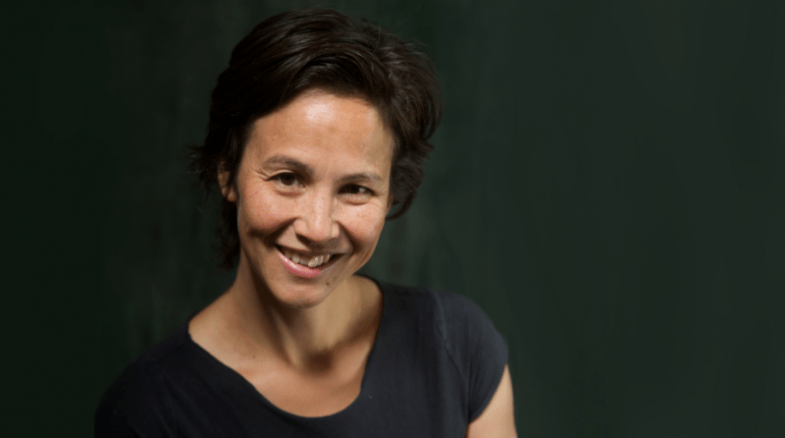When the going gets tough, the tough hand the reins to some unsuspecting fall guy – or, perhaps more likely, fall girl. But the “glass cliff” phenomenon can have positive as well as negative impacts, according to the researcher who identified it.
Australian-born academic Michelle Ryan (pictured below) said that the impact of “poisoned chalice” promotions – not only on women elevated to positions of power, but also on those who follow – is a “potential empirical question” for her new role.
Professor Ryan has been appointed to head the new Asia-Pacific node of the Global Institute for Women’s Leadership at the Australian National University (ANU); the original institute was founded and is chaired by former Australian prime minister Julia Gillard at King’s College London.
Professor Ryan said crises could generate “foot in the door” openings for capable women who go on to thrive, helping to smash the glass ceiling for women around them. But, equally, such circumstances could discourage other women from stepping up.
“Does just having women in leadership positions start to break down the barriers? Partly. Any women can be potential role models, but you [have to consider] how they fare. Female leaders firefighting all the time [is] a less attractive proposition. Hillary Clinton running for president: on the one hand, it was thoroughly inspiring. On the other hand, I wouldn’t want to put myself through that.”

The new role will be a homecoming for the ANU-trained psychologist who, with University of Exeter colleague Alex Haslam, coined the term “glass cliff” to explain why women appeared over-represented in “precarious” leadership positions. The paper was nominated as Times Higher Education’s research project of the year in 2005.
The glass cliff phenomenon is perhaps best known in politics and business. Commonly cited examples include UK prime minister Theresa May, who inherited Britain’s post-Brexit mess; Western Australian and New South Wales premiers Carmen Lawrence and Kristina Keneally, both installed to lead scandal-struck Labor state governments shortly before their electoral defeats; and General Motors chief executive Mary Barra, the first woman to run a global car company, who confronted a mass car recall just two weeks into the job.
The New York Times named the glass cliff as one of the ideas that shaped 2008, and it was shortlisted as the Oxford English Dictionary’s word of the year in 2016. Professor Ryan said world events tended to rekindle interest in the term – Ms Clinton’s first unsuccessful presidential tilt in 2008; and Ms May’s troubled premiership in 2016. “It comes and goes with the news cycles.”
Far from being immune to the phenomenon, higher education was a “very good case study”. Feedback for the 2005 paper included an observation that underfunded university libraries were “always led by women”. And while institutional leadership opportunities have improved for women in academia, female vice-chancellors can attract more criticism than their male colleagues over things such as their salaries, as Dame Glynis Breakwell discovered to her cost at the University of Bath.
Again, Professor Ryan drew political parallels. “Hillary Clinton gets absolutely eviscerated because she can’t quite get her email server right, but Donald Trump gets away with all sorts of things. It’s interesting who comes under scrutiny and who doesn’t.”
The new role, which starts in July, will split Professor Ryan’s time equally between research and advocacy – combining “the best of both worlds”, she said. Senior appointments often require academics to cease research activity, relinquishing “what’s really needed” in gender-equality programmes.
“There are lots of great initiatives [but] not many of them are evidence-based,” she said. “They’re not always based on things that we know work because we’ve tested them; because we understand the underlying processes.
“A lot of what we think we know about gender inequality is just about describing the problem. Then we throw everything at it. [We] try and get more female professors without really understanding the psychological processes underlying that inequality, or how our social structures reinforce it, or how legislation and political leadership might change it.”
Advocacy and academic research are natural bedfellows, she added. While objectivity in science meant obtaining “true” data and not letting one’s views influence the findings, it did not rule out political aims.
“We choose what questions we ask, and we don’t do that in a vacuum. I choose to ask a question that says: ‘Here’s inequality; how do we understand it?’ Part of that is the assumption that inequality is bad, and that’s why we want to look at it. We get that in all science. We try to cure cancer because we have a view that cancer is bad.
“I think politics and advocacy have a massive place in science, in academia. What we do with our results is also important. We shouldn’t just publish in academic journals for other academics to read. It’s part of our job – and part of the politics of it – to put it out there so that it makes a difference.”
Register to continue
Why register?
- Registration is free and only takes a moment
- Once registered, you can read 3 articles a month
- Sign up for our newsletter
Subscribe
Or subscribe for unlimited access to:
- Unlimited access to news, views, insights & reviews
- Digital editions
- Digital access to THE’s university and college rankings analysis
Already registered or a current subscriber? Login










